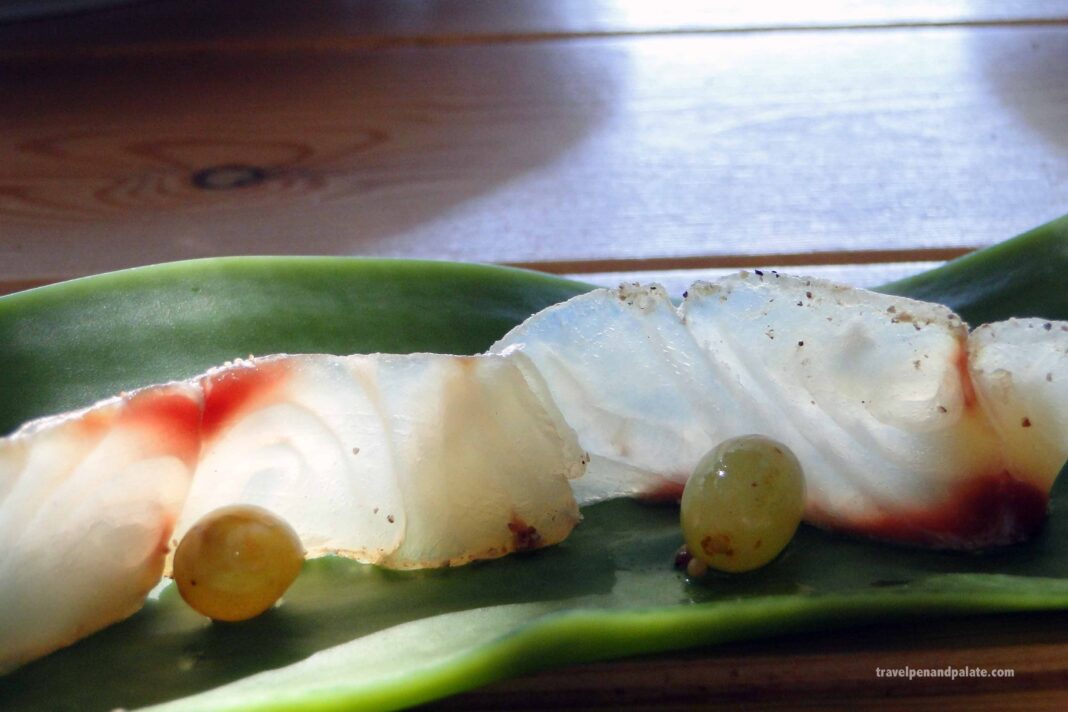Marathia Restaurant on Tinos Island aptly proves the superlatives you have heard on the creativity of Greek cuisine and the uncompromising beauty of Cyclades Island beach locations.
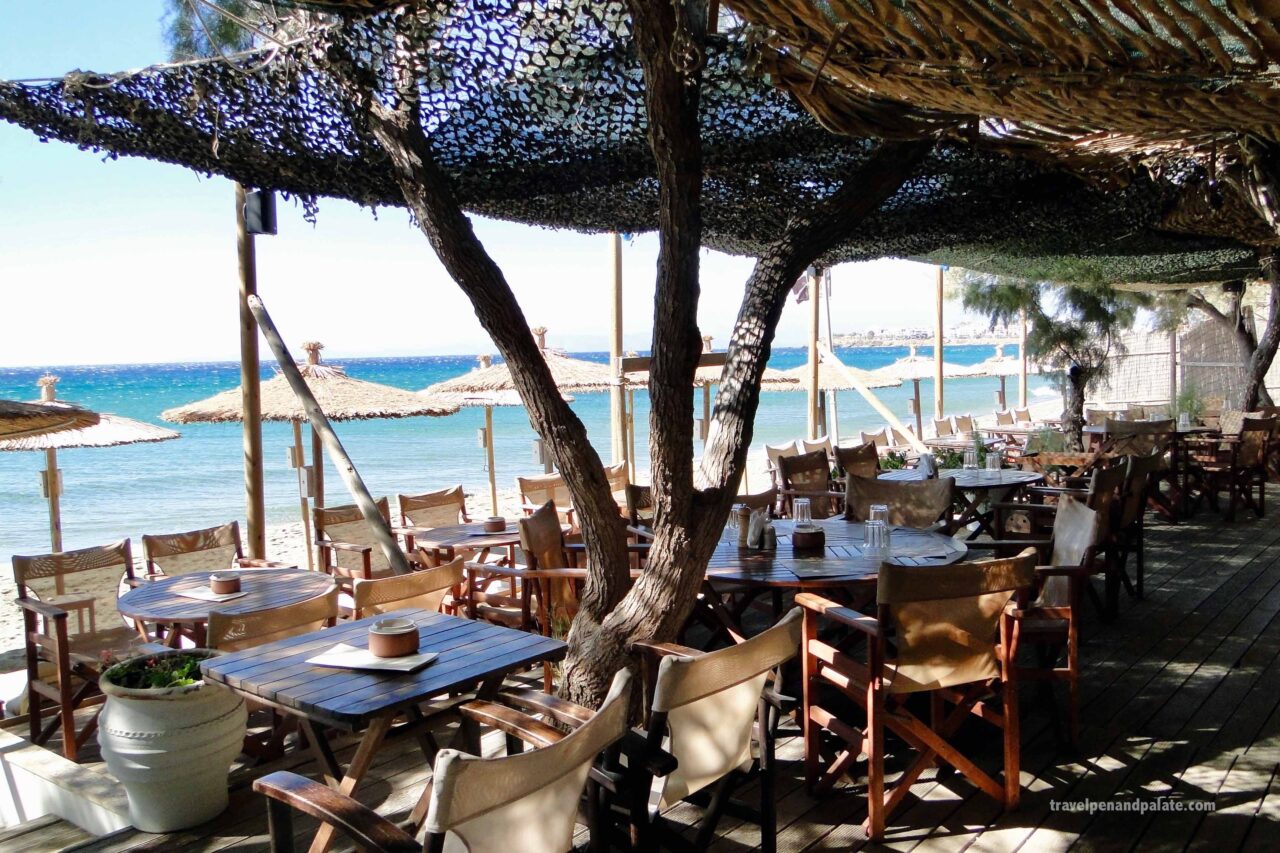
Marathia is both traditional and avant garde. Chef/owner Marinos Souranis, opened Marathia Restaurant in 2002 in the renovated nine-room boutique hotel his parents constructed on Tinos Island over 40 years before. He and his staff use ageless preparation techniques crafting a menu firmly based on local products and traditional recipes.
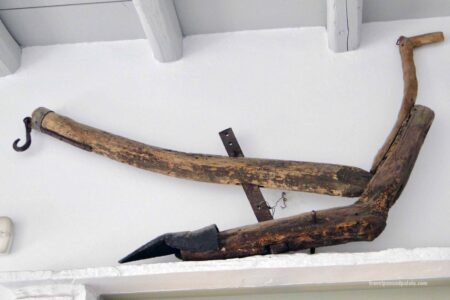
Yet the hook for the curious diner is in the knowledge that subtle personal touches (cinnamon added to homemade petroma cheese) and the imaginative presentations (marinated sardines served in their cans) set Marathia apart. That is a high compliment considering the exemplary level of Tinos gastronomy.
Both restaurant and hotel are open year round. The nine one and two bedroom apartments with kitchens are integrated within a design that’s traditional Greek village villa with 21st century amenities. The hotel includes the airy taverna style indoor dining room with many attractive antiques, tools especially, serving as sculptures against the white stucco walls.

Across the street is the seasonal dining pavilion, Partokali Beach Bar, which itself languidly spreads down stunning Aghios Fokas Beach – the longest sand beach on the island. Besides the dining area, Marathia provides shaded lounge chairs for total enjoyment of this Blue Flag beach. All of this is within a ten-minute drive from the center of Choro.

Their brunch selections offer a variety of cheeses, marinated fish, local sausages, yogurt, fruits and savory dishes. What from a distance could be mistaken for pastry layered with cream topped with strawberries was actually a baked savory pastry layered with cheese, herbs and topped with cherry tomatoes.
Chef Marinos wanted me to sample Marathia’s specialties from the a la carte menu. They are all meze, small plates that together with bread, salad and cheese frequently define a Greek meal. All were traditional centuries old preparations of local ingredients when preservation drove recipes. The dishes using riki, sardines, grazos and fish row are all uncooked salt cured.
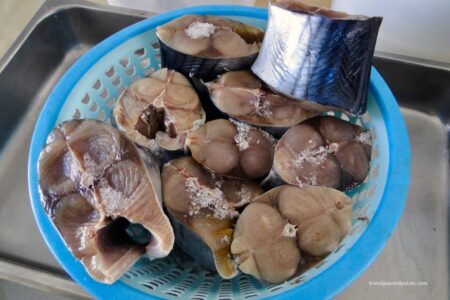
Lakerta appears throughout the Aegean and Adriatic coasts. It uses riki, cousin to bonito fish. The fish is soaked in two separate salt-water solutions each for 24 hours. This cleans the fish. It’s then cut into steaks, salted and weighted down for 3 to 4 days turning daily. The lakerta may then be thinly sliced and eaten or stored in olive oil.
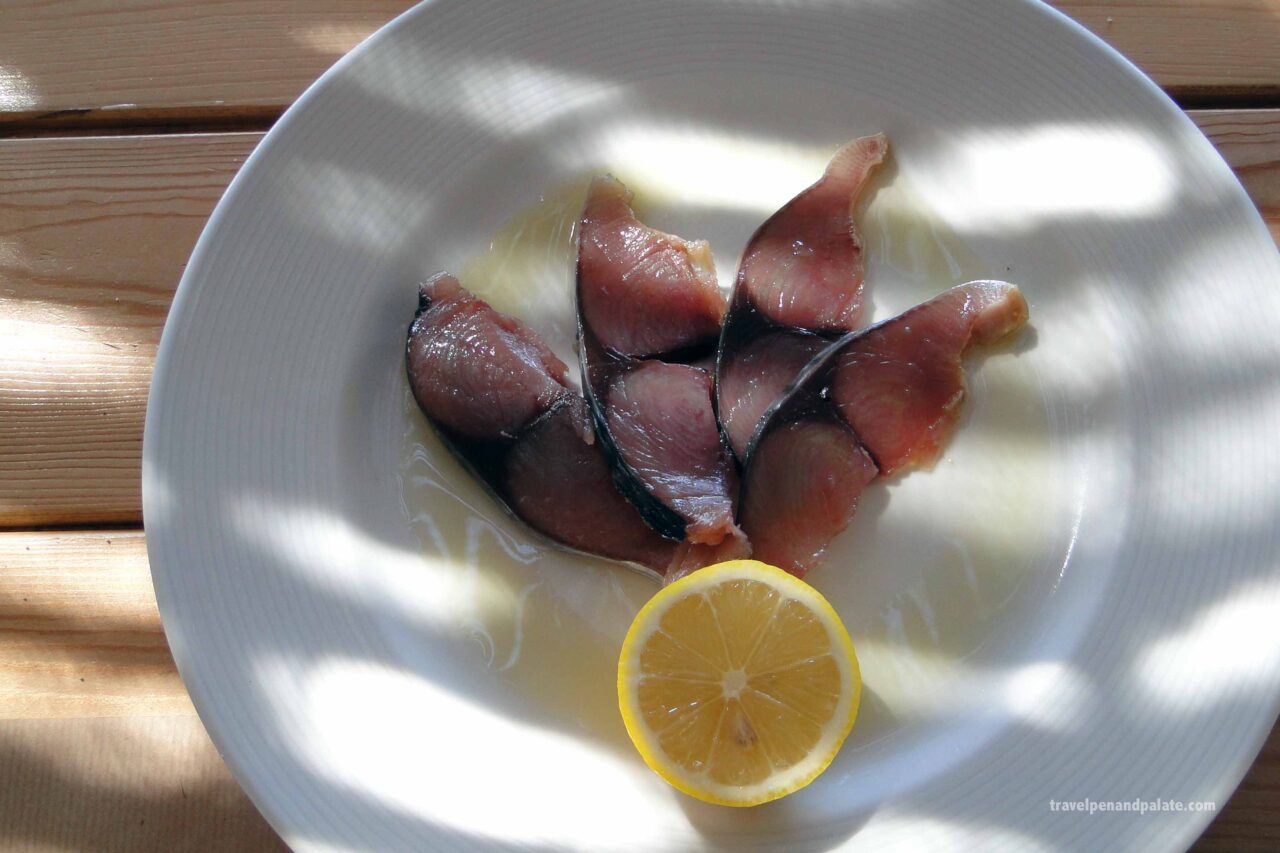
Lakerta is tender with mild saltiness as if fresh from the sea. Serve thinly sliced drizzled with olive oil and lemon.
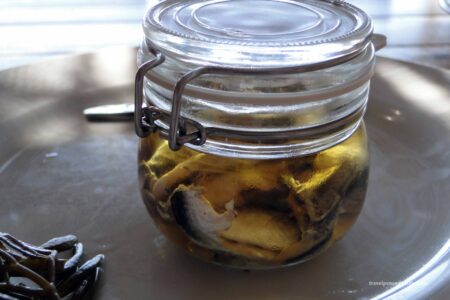
Deboned grazros (cousin to sardines) sit in salt water for 90 minutes and in apple cider vinegar for 5 to 7 minutes. After the vinegar soak they’re placed in jars and covered with sunflower oil – important because sunflower oil imparts no flavor unlike olive and most other oils. The grazros can keep for three months.
Botargo – or avgotaraho – is a caviar delicacy of the cephalus or gray mullet fish row. The whole row sack is cured in sea salt for a few weeks, sundried and then encased in beeswax for preservation as it has been for over a thousand years. Traditionally it’s served thinly sliced with some lemon juice and/or zest and white pepper. It’s eaten either solo, like a ceviche, or with crusty bread and butter (the beeswax is removed before eating).
The botargo has a lightly chewy texture due to the process; yet its unique flavor is intense. Although like wine, flavors can very depending on the life-style and age of the cephalus, I detected hints of mango and sea urchin tongue. Allow the botargo to linger in your mouth to maximize the subtly sweet umami experience.

In preparing smoked white grouper (see top photo) the fish is covered in a mixture of sea salt, white pepper and sugar for 16 days before being smoked for two days. The moist, delicate silky fish is served thinly sliced with a garnish of pickled grapes as counterpoint.
Marinated vegetables, including artichokes, are steamed in water with some vinegar, lemon juice and a little olive oil until just tender. Then they are drained and marinated in olive oil, lemon juice and herbs. The textural contrast of the piquant vegetables pairs well with rich cheeses and delicate fish.
All cheeses, except one, are made in-house from unpasteurized milk and are so labeled on the menu due to health restrictions for certain conditions such as pregnancy. The exception is graviera, which is locally made with pasteurized milk. It’s the second most popular and versatile Greek cheese after feta and similar to gruyère. A firm but creamy cheese with generally mild on the sweeter side taste notes, it’s often sliced and added to cheese trays, grated over pasta and fried as saganaki.
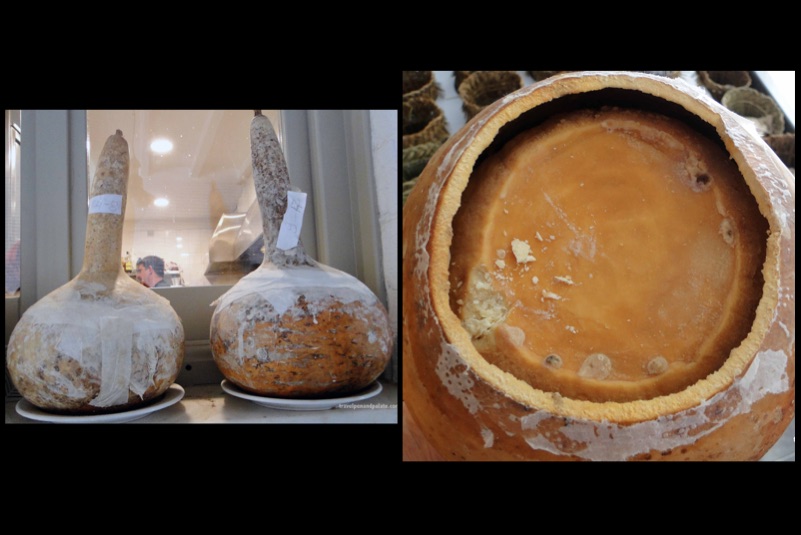
I was surprised to see dozens of kariki aging. Only one person on the island makes it commercially, chef Aggeliki Vidou, but in small batches that cannot satisfy demand. Marinos makes his own kariki – the very rare (in the 21st century) “pumpkin cheese” of Tinos.
The name comes from the small gourd, a karika. Traditionally it was used to collect milk. Now metal milk containers are called kariki. It starts with petia a simple base cheese, that’s packed in the karika – the actual gourd. The gourd is sealed with a flour/water paste and aged for 2 to 3 months. The interaction with the gourd imparts both a color and deep flavor that hints of caramel, mild gorgonzola and dried figs.

His malathouni, also from the base petia, is made with goat’s milk. On average malathouni is aged for about one month. At Marathia it’s aged six months intensifying the natural tang of the goat’s milk yet maintaining a creamy texture.
Petroma’s base cheese is freshly strained petia. The round of cheese is then weighted until most of the additional whey drains. At Marathia they add a bit of sea salt and cinnamon to the petia before straining.
The wood-burning oven near the entrance to the hotel is for bread baking. Olive wood only is used for its high and uniform burning temperature. Breads are made from whole-wheat flour and the yeast from a starter dough. The breads have a touch of sourdough texture and aroma that compliments rich butter and cheeses.

Tinos Island’s own T–Oinos Winery’s 2013 Clos Stegasta Assyrtiko accompanied the main courses. It has a classic nose of dry summer grasses and vanilla. The tongue picked up fresh citrus zest, which lingered. The throat sensed a pleasant finish of dry grapefruit zest. Assyrtiko ought to be a Greek national treasure.
With the cheese course, local Domaine de Kalathas’ Winery 10+12 late harvest 100% Tinos Island potamisi grape produces a fresh semi-dry white wine. It’s not aged and has subtle tones of honey and white currents with floral notes. Despite being semi-dry in the mouth it has a surprising smooth dry finish.
Tinos Island is a gastronomic destination of great physical beauty. Eating a convenience store hotdog on a Greek island beach can be memorable. Or you can experience Marathia – people using nature’s bounty to create edible art.
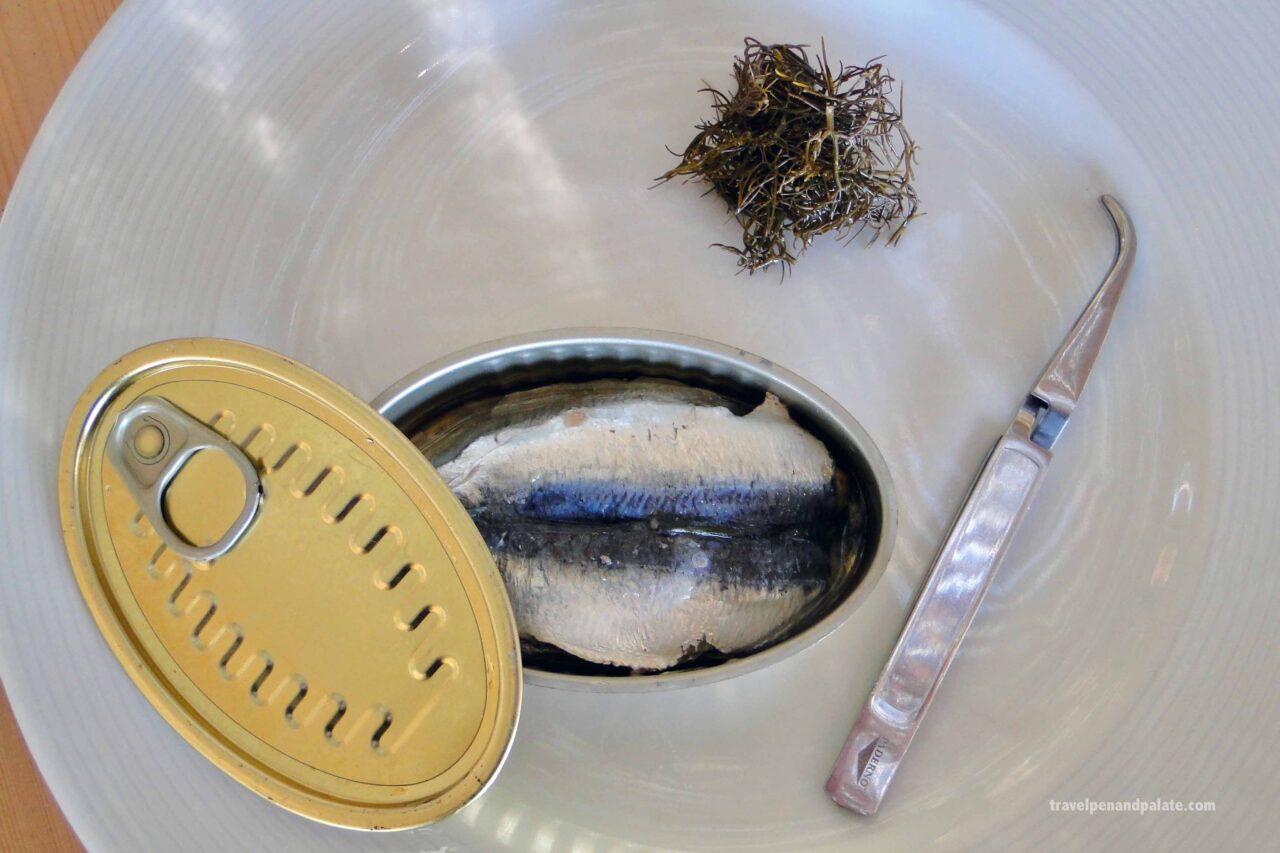
When you go: Marathia Restaurant and Apartments, Aghios Fokas, Tinos Island is just a short drive east of the center of Choro. Tinos Island has frequent ferry service from the nearby Athens ports of Piraeus and Rafina.
Special Thanks: Marathia Restaurant and the Municipality of Tinos Island. Transportation was provided by Dellatolas Rent a Car and accommodations by Hotel Meltemi. Arrangements were facilitated by the MTCgroup Consulting.

Travel with Pen and Palate to Greece and the world every month in the Hellenic News of America.




